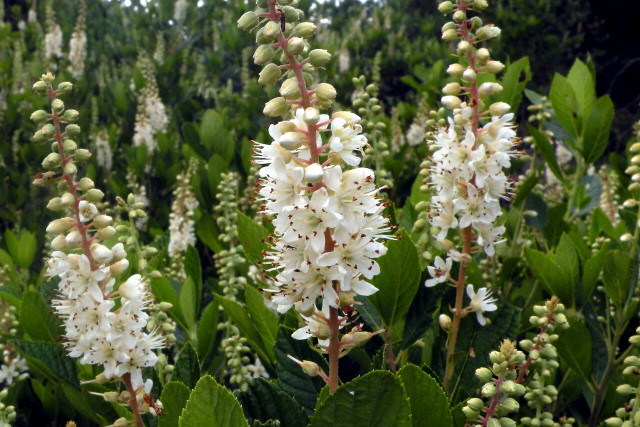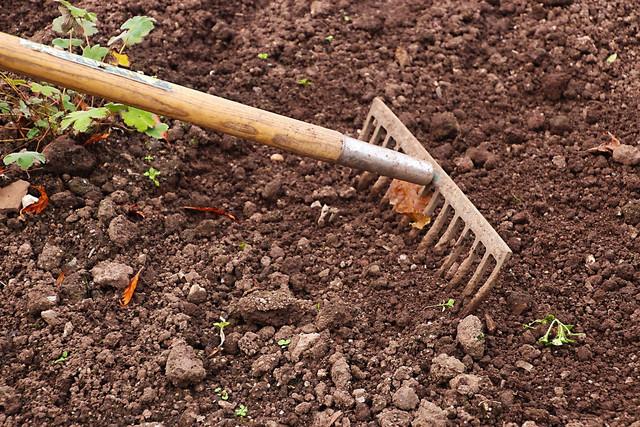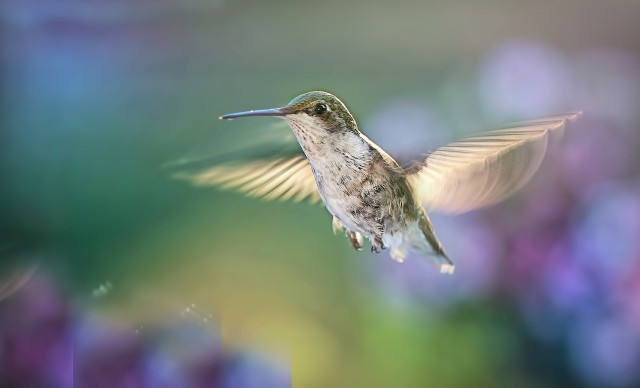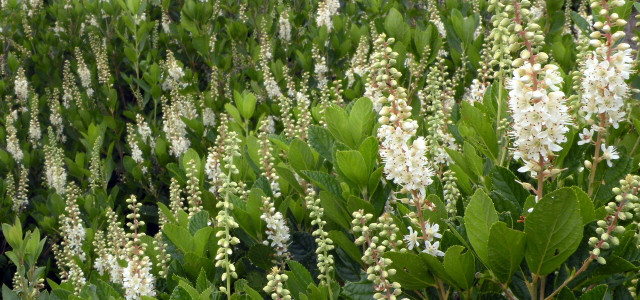Want to add some low-maintenance and beneficial plants to your garden? Stick with native plants like sweet pepperbush! We’ll give you some tips on how to care for this flowering shrub.
Clethra alnifolia is a gorgeous flowering shrub that goes by several different names, including sweet pepperbush, summersweet, coastal sweet pepper, and alderleaf clethra – just to name a few. It’s a native plant to the eastern coastal states from Florida all the way up to Maine, as well as certain parts of Louisiana and Texas. It feels most at home near swamps, seashores, stream banks, and bogs.
You’ll recognize sweet pepperbush by its cylindrical white and pink blooms, surrounded by simple oval leaves, with jagged edges. Come fall, the shrub will add some striking foliage to your yard as the green leaves turn to a pale gold color before they drop.
Planting & Cultivating Sweet Pepperbush



Sweet pepperbush makes a great addition to any garden regardless of your gardening abilities because it’s so easy to care for. There are a few things to keep in mind if you want to plant this shrub in your garden.
- Zones: 3 to 9
- Height: 3-8ft. tall
- Spread: 4-6ft. wide
- Planting Time: spring
- Bloom Time: July & August
- Exposure: full to partial sun
- Soil: slightly acidic, well-draining
Due to its high salt-spray tolerance, Clethra alnifolia is the perfect shrub for coastal gardens.
How to Plant Clethra Alnifolia



After the last frost in spring, you can start to prepare a place in your yard for this flowering beauty. You can grow sweet pepperbush from seed, softwood cuttings, or root division from someone else who has one in their yard. The quickest and easiest option is to head on over to your local gardening center to see if they have seedlings available.
- Once you’ve got your seedling, you’ll want to scout out a fairly sunny location with slightly acidic (pH<6.8) soil. Typically sandy/clay soils are a good choice. It’s important that the soil is well-draining, but that you keep it nice and moist, as sweet pepperbush loves its water.
- Dig a hole about twice as wide and slightly deeper than the root ball on your seedling. If you’re planting multiple seedlings, dig the holes four to six feet apart. Add water to the hole and allow it to absorb.
- Carefully lift the seedling from its container and gently loosen and spread the roots.
- Place the plant in the hole and cover the roots with soil. Gently pat the ground down around the stem to ensure that the seedling is stable.
- Water your sweet pepperbush plant well.
- Spread out a layer of mulch around the new plant to discourage weed growth and retain moisture.
Your shrub will require regular watering until it is fully established, which will take about a year. After that, you will only need to water your sweet pepperbush during periods of long drought.
Summersweet Benefits



The fact that it’s a native plant is a great incentive to plant sweet pepperbush, but if you’re not yet convinced, let’s take a look at some of the other reasons this flowering shrub deserves a place in your garden:
- fragrant and long-lasting summer blooms
- late summer color and gorgeous foliage in the fall
- attracts birds, bees, and butterflies
- other mammals also like to eat the fruit
- incredibly valuable to native bees, bumblebees, and honeybees
- can work as erosion control on coastal areas
- like soapwort, the flower heads can be used as a natural soap when rubbed together
Read more:
- 10 Small Ways to Help Bees That Will Make a Difference
- Homemade Suet for Birds: Easy Bird Food Recipe
- 10 Flowering Vegetables You Can Grow in Your Garden
Do you like this post?







